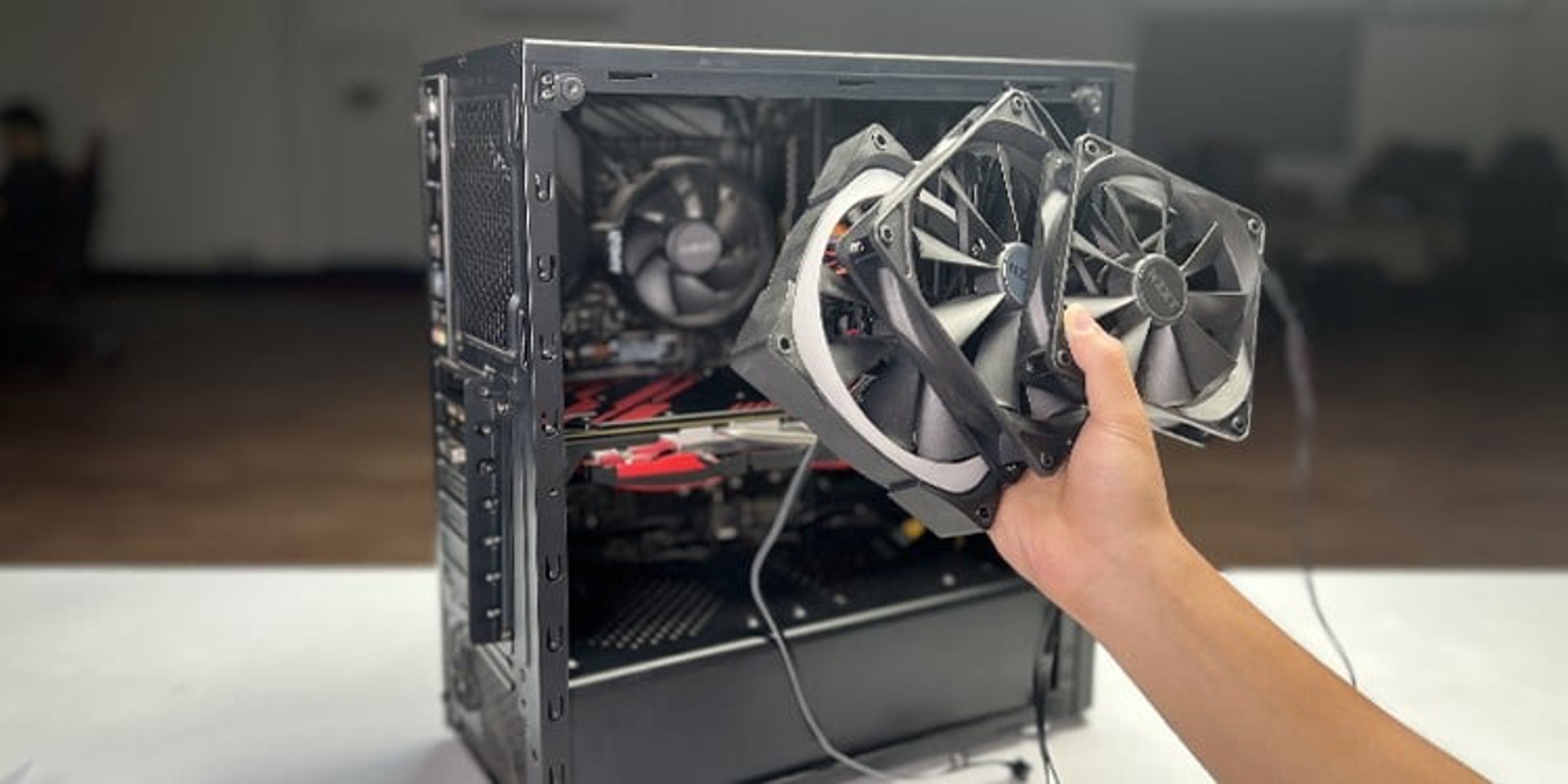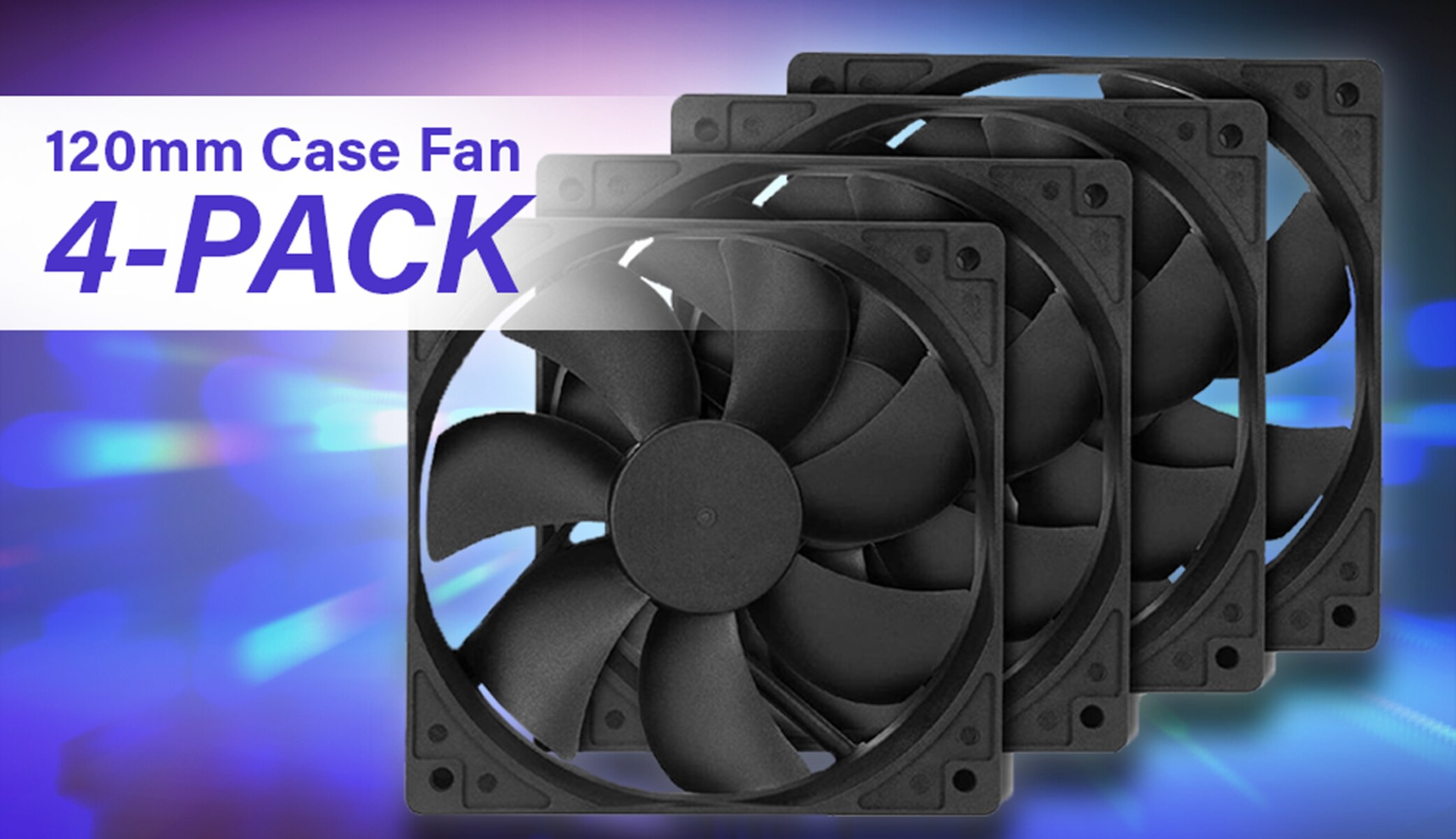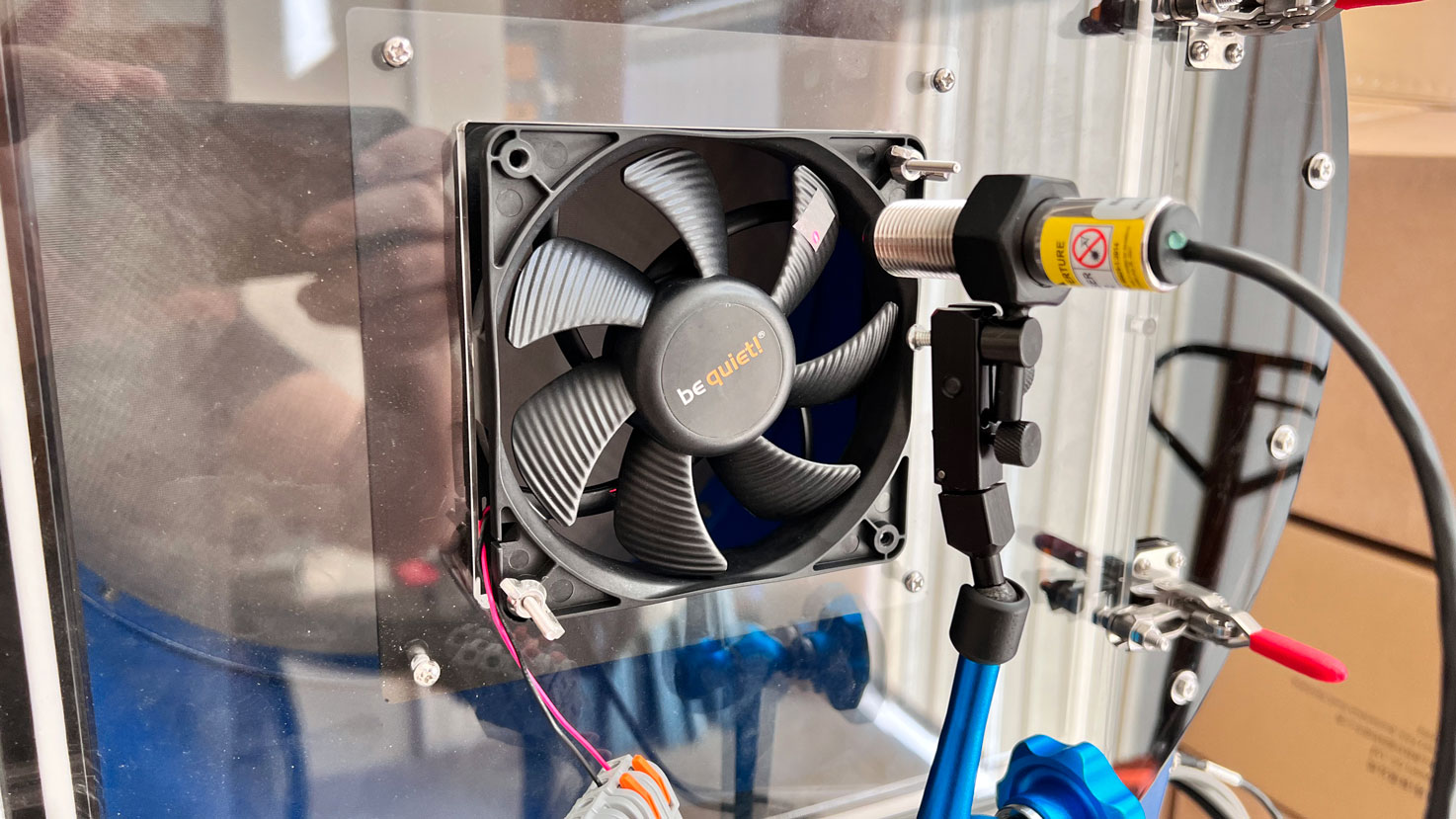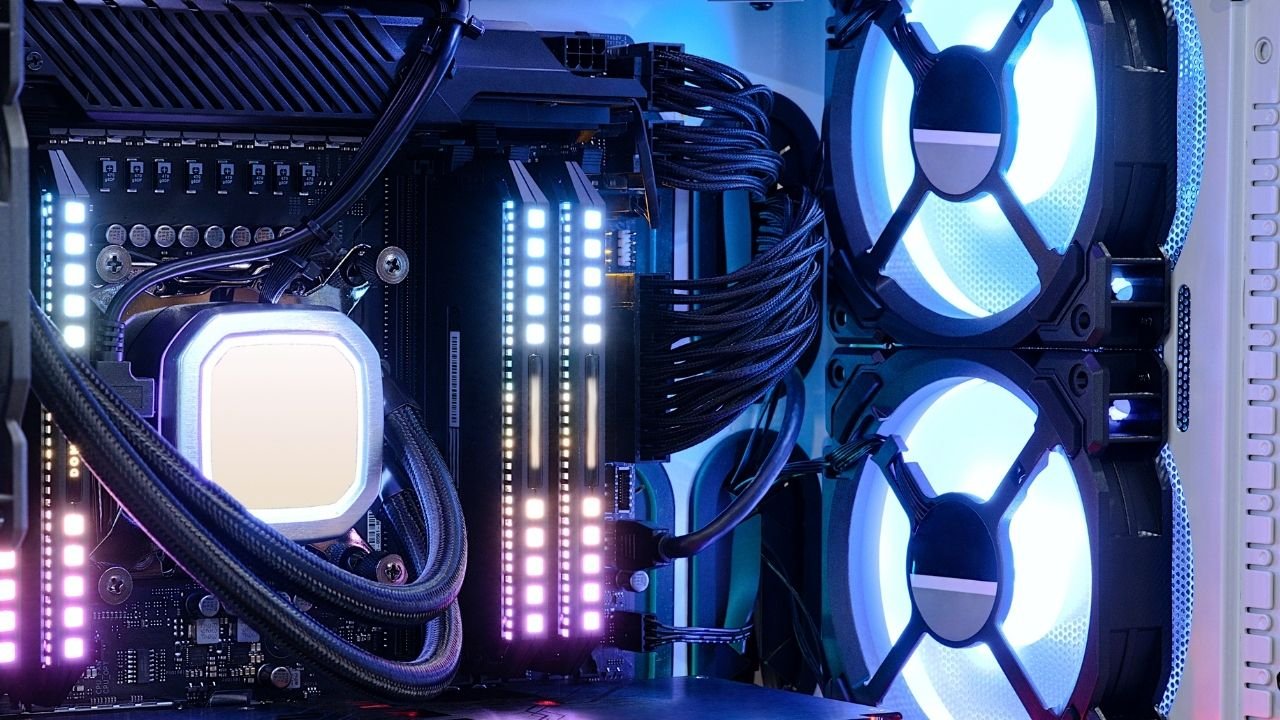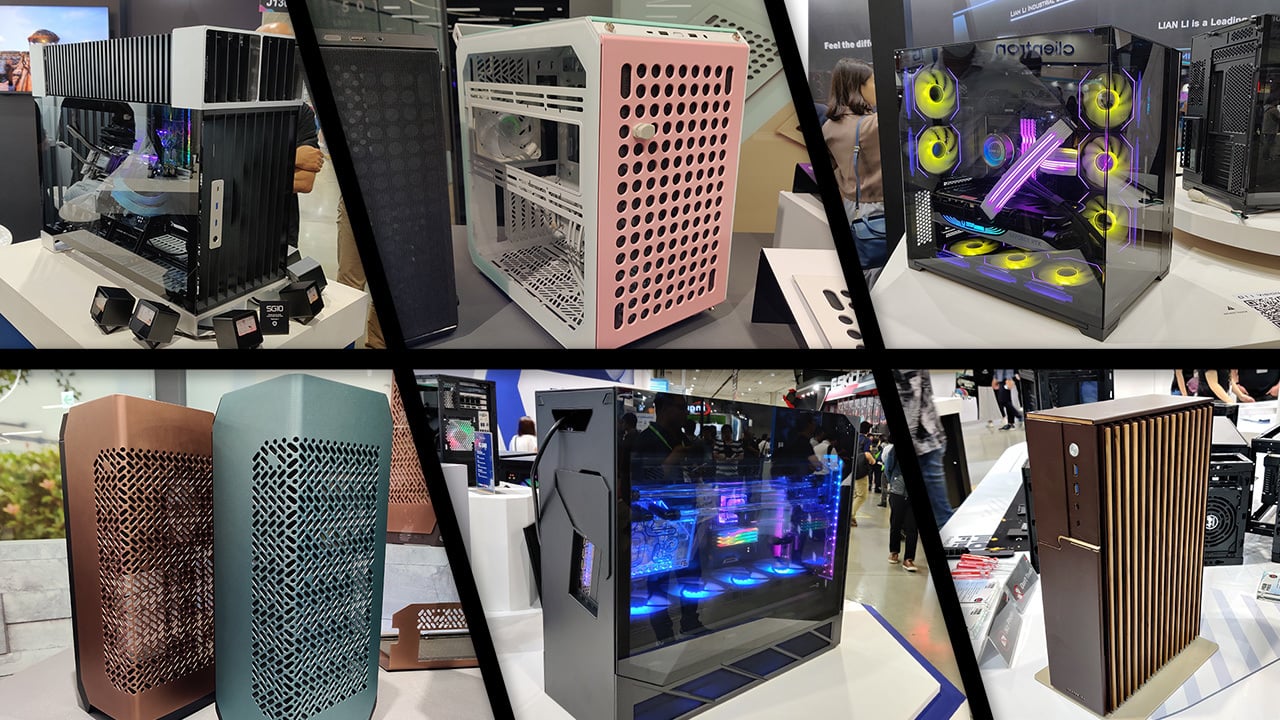Introduction
Welcome to our guide on “How Much Power Does a Case Fan Use?” If you’re a PC enthusiast or a computer DIY-er, you’ve likely come across case fans during your hardware adventures. These small but mighty devices play a crucial role in keeping your PC cool, preventing overheating and ensuring optimal performance. But have you ever wondered how much power these case fans consume?
In this article, we will explore the power consumption of case fans and delve into the factors that can affect their energy usage. From understanding how case fans work to measuring their power consumption, we will provide you with the necessary information to make informed decisions about your cooling setup. Whether you’re building a new PC or looking to optimize your existing one, understanding the power consumption of case fans can help you choose the most efficient options and improve your system’s energy efficiency.
So, if you’re ready to shed some light on how much power these little spinning wonders consume, let’s dive right in!
What is a case fan?
A case fan is an essential component of any computer system that aids in cooling the internal components. It is a small but powerful device that circulates air within the computer case, dissipating heat produced by the CPU, GPU, and other hardware components. By creating an airflow, case fans help maintain optimal temperatures, ensuring the longevity and performance of your PC.
Case fans come in various sizes, typically ranging from 80mm to 140mm, although larger sizes are also available. They are commonly installed in the front, rear, top, or side panels of the computer case, strategically placed to expel hot air and bring in cool air for efficient cooling.
Most case fans consist of a set of rotating blades, housed in a frame, and are powered by electricity. The rotation of these blades creates airflow, forcing cool air to enter the case and pushing warm air out. Case fans may also come with additional features like LED lighting for aesthetics or variable speed control for customizable cooling performance.
Without case fans, the internal components of a computer would be at risk of overheating, resulting in performance degradation, system instability, and potentially permanent damage. Therefore, case fans are considered a vital part of computer cooling and are often included in pre-built systems or recommended as aftermarket add-ons for custom builds.
Now that we understand what a case fan is and its purpose, let’s explore how these fans work and the factors that determine their power consumption.
How does a case fan work?
Understanding how a case fan works is key to comprehending its power consumption. At its core, a case fan functions similar to any other type of fan: it moves air. But let’s take a closer look at the mechanics behind its operation.
A case fan consists of several key components: the motor, the blades, and the frame. The motor, typically a brushless DC (BLDC) motor, is responsible for generating the rotational force required to spin the blades. The blades, designed with a curved shape, are positioned in such a way that when they spin, they create an airflow movement by pushing air in a particular direction.
When supplied with power, the motor initiates the rotation of the blades. The speed at which the blades rotate is measured in revolutions per minute (RPM). Higher RPM values indicate faster spinning, resulting in increased airflow and better cooling performance.
Case fans may also feature additional technologies to optimize airflow. One such technology is blade design, where manufacturers utilize varying blade angles and shapes to enhance the efficiency and flow of air. Another feature commonly found in case fans is the inclusion of bearings to reduce friction and noise during operation.
The direction in which the case fan blows air is determined by the mounting position. Fans can be configured to either intake cool air from the outside or exhaust warm air from the inside. Different placements and combinations of case fans can create positive or negative air pressure within the computer case, influencing the airflow dynamics and cooling efficiency.
Overall, the primary function of a case fan is to draw in cooler air and expel hot air, maintaining an optimal temperature zone inside the computer case. This constant circulation of air helps dissipate the heat produced by the various hardware components, preventing overheating and ensuring stable operation.
Now that we have a basic understanding of how case fans work, let’s delve into the power consumption of these cooling devices and explore the factors that influence it.
Power consumption of a case fan
When it comes to the power consumption of a case fan, it is influenced by several factors. Understanding the power consumption can help you determine the energy requirements of your cooling setup and make informed decisions.
Case fans typically have low power consumption compared to other components in a computer system. On average, a case fan consumes around 1 to 5 watts of power. However, this value can vary based on factors such as the size of the fan, the fan’s speed, and any additional features it may have, such as LED lighting.
Smaller case fans, such as those with an 80mm or 92mm size, tend to consume less power compared to larger fans. This is because smaller fans require less energy to rotate their blades. On the other hand, larger case fans, like those with a size of 120mm or 140mm, may consume slightly more power due to their greater airflow capacity.
The speed of the case fan also plays a role in its power consumption. Case fans typically have adjustable fan speeds, allowing you to control their RPM. Generally, higher fan speeds result in increased power consumption. So, if you require more cooling capacity, you may need to sacrifice some energy efficiency.
Additionally, case fans with additional features, such as LED lighting or customizable RGB effects, may consume slightly more power compared to fans without these features. The power draw of these additional components is typically low, but it can contribute to the overall power consumption of the fan.
It’s important to note that the power consumption of case fans is relatively low compared to other components of a computer system, such as the CPU or GPU. However, when multiple case fans are installed in a system, their combined power consumption can add up.
By considering the power consumption of case fans, you can choose the most energy-efficient options for your cooling needs. This not only helps reduce electricity costs but also contributes to a greener and more sustainable computing environment.
Now that we have explored the power consumption of case fans, let’s examine the various factors that can affect their energy usage.
Factors affecting power consumption
Several factors can influence the power consumption of a case fan. Understanding these factors can help you make informed decisions when selecting and optimizing your cooling setup.
- Fan size: The size of a case fan can impact its power consumption. Generally, smaller fans tend to consume less power compared to larger fans. This is because smaller fans require less energy to rotate their blades.
- Fan speed: The RPM (revolutions per minute) of a case fan directly affects its power consumption. Higher fan speeds typically result in increased power consumption. Adjusting the fan speed to find a balance between cooling performance and power efficiency can help optimize power usage.
- Additional features: Case fans with additional features like LED lighting or RGB effects may consume slightly more power compared to fans without these features. While the power draw of these features is usually low, it can contribute to the overall power consumption of the fan.
- Bearing type: The type of bearing used in a fan can affect its power consumption. Fans with more efficient bearing types, such as fluid dynamic bearings (FDB) or magnetic levitation (ML), tend to have lower power requirements compared to fans with sleeve bearings or ball bearings.
- Fan control: Some case fans come with built-in speed control options. By adjusting the fan speed based on the temperature or system demands, you can optimize power consumption. Using fan control software or hardware like fan controllers can help regulate power usage.
- Airflow configuration: The arrangement and placement of case fans can impact power consumption. Efficient airflow configuration, such as creating positive or negative air pressure, can reduce the overall workload of individual fans, potentially leading to lower power consumption.
- Cable management: Proper cable management inside the computer case can improve the airflow and reduce obstructions for case fans. This improved airflow can result in better cooling performance and potentially lower power consumption.
It’s important to consider these factors when selecting case fans for your cooling setup. By choosing fans with features that align with your requirements and optimizing their usage based on your system’s needs, you can strike a balance between cooling performance and energy efficiency.
Now that we understand the factors that can affect the power consumption of case fans, let’s explore how to measure their power consumption accurately.
Measuring power consumption of a case fan
Measuring the power consumption of a case fan is essential to understand its energy requirements and optimize your cooling setup accordingly. There are a few methods you can use to accurately measure the power consumption of a case fan:
- Power monitoring devices: One of the most accurate ways to measure power consumption is by using a power monitoring device. These devices, such as a digital wattmeter or a power meter plug, can be connected between the fan and the power source. They provide real-time measurements of power usage, including voltage, current, and wattage.
- Motherboard monitoring software: Some motherboard manufacturers provide monitoring software that allows you to track power consumption. This software can provide insights into the power draw of individual case fans connected to the motherboard headers. However, keep in mind that the accuracy of software-based measurements may vary.
- Manufacturer specifications: Case fan manufacturers often provide information about the power consumption of their products in the technical specifications. These specifications can give you a rough estimate of the power usage of a specific fan model. However, actual power consumption may vary depending on usage conditions.
- Power supply unit (PSU) monitoring: Modern power supply units often come with built-in monitoring features. These features allow you to view power consumption levels for different components connected to the PSU, including case fans. However, keep in mind that PSU monitoring may not provide specific fan-level measurements.
When measuring power consumption, it’s crucial to consider that individual case fans may consume different amounts of power based on their size, speed, and specifications. Additionally, the power consumption of the entire cooling setup may vary based on the number of fans installed and their operational configuration.
By accurately measuring the power consumption of your case fans, you can make informed decisions about their usage, optimize your cooling setup, and look for ways to reduce energy consumption without compromising performance.
Now that we know how to measure the power consumption of case fans, let’s explore some effective strategies to reduce their power usage.
How to reduce power consumption of a case fan
Reducing the power consumption of your case fan not only helps conserve energy but also contributes to a quieter and more efficient cooling setup. Here are some effective strategies to reduce the power usage of your case fan:
- Optimize fan speed: Adjust the fan speed to strike a balance between cooling performance and power consumption. Lowering the fan speed can significantly reduce power usage, although it may impact cooling efficiency. Experiment with different speed settings to find the optimal balance for your system.
- Proper fan placement: Ensure that case fans are strategically placed to maximize airflow and cooling efficiency. A well-planned fan configuration can help distribute air more efficiently, reducing the workload on individual fans and potentially lowering power consumption.
- Maintain clean and dust-free fans: Regularly clean your case fans to ensure proper airflow. Dust buildup can restrict airflow, forcing fans to work harder and consume more power. Use compressed air or a fine brush to remove dust and debris from fan blades and surrounding areas.
- Consider fan controllers: Invest in fan controllers that allow you to adjust the speed of your case fans manually. This gives you precise control over power usage, allowing you to customize cooling performance based on system requirements while keeping energy consumption in check.
- Use efficient fan designs: Look for case fans with efficient blade designs and advanced bearing technologies. Fans with optimized designs and high-quality bearings tend to have better airflow performance while consuming less power.
- Efficient cable management: Implement proper cable management inside your computer case to improve airflow and reduce obstructions for case fans. This can lead to better cooling efficiency and potentially lower power consumption.
- Consider alternative cooling methods: Depending on your specific requirements and system configuration, you may consider alternative cooling methods such as liquid cooling. Liquid cooling setups can provide efficient cooling while reducing the number of case fans required, thus reducing overall power consumption.
By implementing these strategies, you can effectively reduce the power consumption of your case fans without compromising the overall cooling performance of your system. Remember to monitor temperature levels to ensure that your hardware remains within safe operating limits.
Now that we’ve explored how to minimize power consumption, let’s wrap up with some key takeaways.
Conclusion
Understanding the power consumption of case fans is essential for optimizing your cooling setup and conserving energy. By considering factors such as fan size, speed, additional features, and airflow configuration, you can make informed decisions when selecting case fans that balance cooling performance and power efficiency.
Measuring the power consumption of case fans using power monitoring devices or monitoring software can provide more accurate insights into their energy requirements. This information can guide you in optimizing fan speeds, exploring efficient fan designs, and implementing proper cable management to reduce power consumption.
Remember that while case fans play a crucial role in maintaining optimal temperatures in your computer system, their power consumption is relatively low compared to other components. However, when multiple fans are installed, their combined power usage can add up. Therefore, finding the right balance between cooling performance and energy efficiency is key.
By following strategies such as optimizing fan speed, maintaining clean and dust-free fans, utilizing fan controllers, and considering alternative cooling methods, you can effectively reduce the power consumption of case fans without compromising the overall performance of your system.
So, whether you’re a PC enthusiast building a new system or looking to optimize your existing setup, understanding and managing the power consumption of case fans will contribute to a more energy-efficient and sustainable computing experience.







